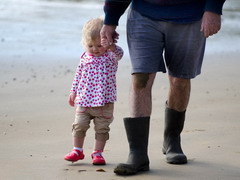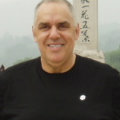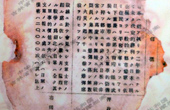'One country, two systems' policy in HK
(China Daily) Updated: 2014-06-11 08:10Appendix
I. Statistics of Hong Kong's Economic and Social Development
1. The Gross Regional Product (GRP) of Hong Kong rose from HK$1.37 trillion in 1997 to HK$2.12 trillion in 2013, an average annual growth rate of 3.4 percent.
2. The fiscal reserves of the HKSAR government had increased by 65.2 percent from HK$457.5 billion at the end of 1997 to HK$755.7 billion at the end of March 2014.
3. Hong Kong's foreign exchange reserves had grown by 3.35 times from US$92.8 billion at the end of 1997 to US$311.2 billion by the end of 2013.
4. According to the 2013 statistics released by the International Monetary Fund (IMF), Hong Kong's GRP and per-capita GRP respectively ranked 35th and 7th in the world, as calculated by purchasing power parity (PPP).
5. As Hong Kong is a leading international banking center, 73 of the world's top 100 banks operate in Hong Kong.
6. As Asia's second-largest and the world's sixth-largest securities market, Hong Kong recorded a market capitalization of HK$24.04 trillion by the end of 2013. IPO funds raised by the Hong Kong Stock Exchange in 2013 totaled HK$166.5 billion, making Hong Kong the second-largest IPO market in the world.
7. Hong Kong's foreign exchange market scored an average daily turnover of US$274.6 billion in 2013, making it the fifth-largest foreign exchange market in the world.
8. According to the 2012 Financial Development Report released by the World Economic Forum in October 2012, Hong Kong's financial development index ranked top worldwide. Hong Kong ranked third in the Global Financial Centres Index published by the City of London Corporation in September 2013.
9. As the world's ninth-largest trading economy, Hong Kong is home to approximately 100,000 import and export companies, which trade with almost every country and region in the world.
10. Hong Kong's external merchandise trade grew by a factor of 2.48 from HK$3.07 trillion in 1997 to HK$7.62 trillion in 2013.
11. Hong Kong is one of the largest recipients of foreign direct investment (FDI). The World Investment Report 2013 released by the United Nations Conference on Trade and Development (UNCTAD) shows that Hong Kong is the world's third-largest recipient of FDI. By the end of 2013, the total number of overseas companies registered in Hong Kong reached 9,258, an 83 percent increase over 1997. By June 2013, 1,379 foreign-funded companies in Hong Kong served as regional headquarters and 2,456 foreign representative offices served as regional offices, recording 52.7 percent and 52.5 percent increase respectively over that at the end of 1997.
12. As one of the largest container ports in the world, Hong Kong handled 22,288,000 ISO containers in 2013, 52.9 percent higher than in 1997.
13. Hong Kong is the world's fourth-largest ship registry. By the end of 2013, Hong Kong-registered ships numbered 2,327, totaling 86.43 million dwt.
14. The Hong Kong International Airport, from which more than 100 airlines operate flights, is the world's fifth-busiest passenger airport and has the world's most active air cargo operation. Its passenger traffic and cargo throughput in 2013 were 2.18 times and 2.53 times the 1998 figures, respectively.
15. Hong Kong ranked third among over 660 international port cities or regions in the 2013 Global International Shipping Center Index.
16. The HKSAR government's 2014-2015 budget recurrent expenditure on education is HK$67.13 billion, 21.8 percent of the government's total recurrent expenditure. The budget for expenditure on education is HK$75.37 billion, accounting for as high as 18.3 percent of the government's total expenditure budget and ranking first in all budget expenditure items. Hong Kong has been providing 12-year free education through public schools starting from the 2008/09 school year.
17. Since Hong Kong returned to China in 1997, institutions of higher learning that award local degrees have increased from 12 to 17, of which eight are funded by the government. The University of Hong Kong and the Hong Kong University of Science and Technology were among the top 10 in the Asia University Rankings released by Times Higher Education in 2013. The University of Hong Kong was ranked 43rd in the Times Higher Education World University Rankings 2013/14.
18. From the second quarter of 2000 to the third quarter of 2013, the percentage of people with post-secondary education in the entire employed population rose from 23.7 percent to 35.1 percent, and the percentage of those with higher education in the employed population increased from 14.5 percent to 26 percent. Hong Kong students remained high in the 2012 rankings of the Programme for International Student Assessment (PISA). Hong Kong ranked third in the Global Index of Cognitive Skills and Educational Attainment published by education company Pearson in 2012.
19. In the 2014/15 fiscal year, the HKSAR government's budget expenditure on medical and health care reaches HK$52.4 billion, accounting for 17 percent of the government's recurrent expenditure.
20. By the end of 2012, all types of health facilities in Hong Kong had a total of 35,500 beds. Public medical facilities with 90 percent of their funding coming from the government comprise 38 public hospitals, 48 specialist clinics and 73 general out-patient clinics, with 64,000 employees and 27,000 beds. They provide 90 percent of the in-patient services and 30 percent of the out-patient services of Hong Kong.
21. Hong Kong's infant mortality rate, dropping to 1.6 per thousand in 2013 from 4 per thousand in 1997, is one of the lowest in the world. Hong Kong also enjoys one of the highest life expectancies in the world - 80.9 for men and 86.6 for women.











